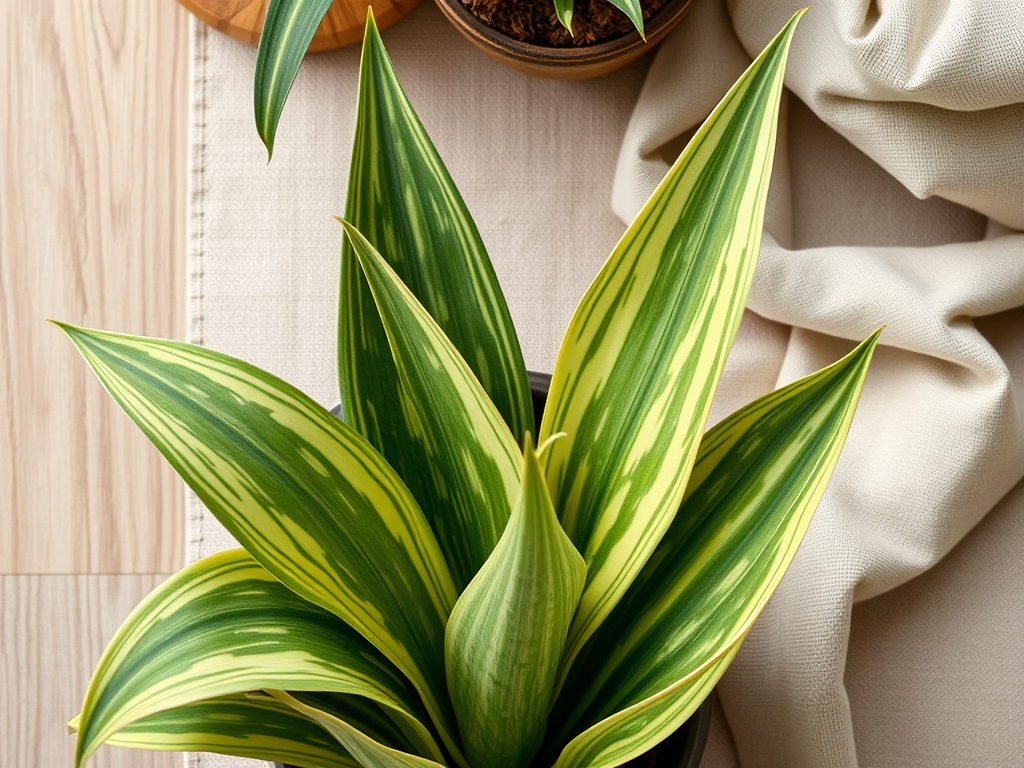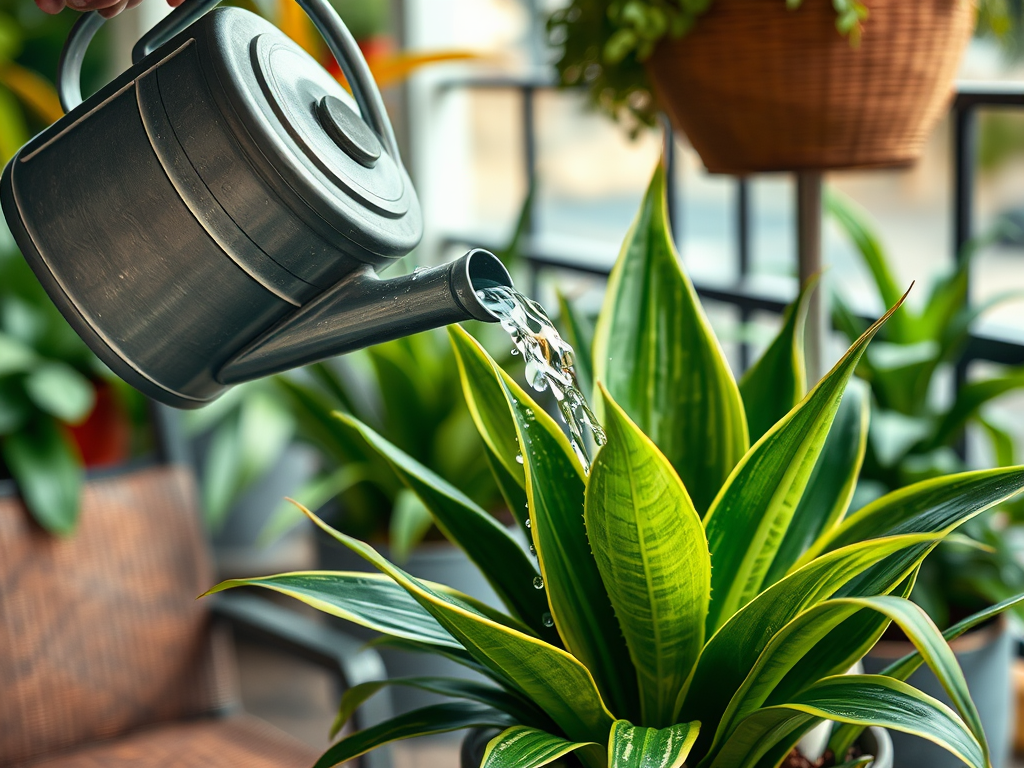If you’re looking to add a touch of greenery to your home, the snake plant is one of the best choices you can make. This resilient plant has gained tremendous popularity not just for its striking appearance but also for its minimal care requirements. As a houseplant enthusiast, understanding the basics of watering your snake plant properly is key to ensuring its longevity and vibrancy. With its unique, sword-like leaves, proper hydration will not only enhance its beauty but also promote its health, preventing any unwanted stress or complications. Dive into this guide to unlock the secrets of keeping your snake plant perfectly hydrated. By honing your watering practices, you will cultivate a thriving indoor oasis right in your living space.
Understanding the Snake Plant’s Watering Needs

Snake plants, known scientifically as Sansevieria, are survivors in every sense of the word. They hail from the arid regions of West Africa, which has equipped them with the ability to tolerate drought conditions. This natural adaptation makes them less demanding compared to other houseplants, but it also requires a keen understanding of their watering needs. It’s essential to factor in various elements such as soil type, drainage systems, and environmental conditions when establishing a watering routine. Too much or too little water can lead to distress, so getting it just right is vital for your plant’s health.
In their natural habitat, snake plants are well adapted to thrive in regions where rainfall is sporadic. This resilience means they prefer a “less is more” approach when it comes to hydration. A well-drained potting mix mimics their original environment and prevents excess moisture. Therefore, acknowledging their native habitat can significantly enhance your watering strategy. The way snake plants naturally collect and retain moisture can offer crucial insights that will empower plant owners to create a nurturing environment.
Signs of Overwatering and Underwatering

Being able to recognize the signs of overwatering and underwatering is fundamental for any snake plant owner. The health of your plant often hinges on how well you can diagnose its hydration needs. Let’s take a closer look at what to look for and how to remedy these issues before they escalate into more serious conditions. By paying attention to your snake plant’s cues, you can adjust your care routine, ensuring it receives just what it needs without excess.
Symptoms of Overwatering
Overwatering is one of the most common mistakes made by plant owners. The symptoms can be quite telling: yellowing leaves, mushy stems, and wilting can all indicate there’s too much moisture in the soil. In severe cases, root rot can set in, causing irreversible damage. Here are some signs to watch for:
- Leaves turning yellow or translucent
- Soil remains soggy for prolonged periods
- Sticky residue on the leaves
- Foul smell coming from the soil
Symptoms of Underwatering
On the flip side, underwatering can be just as detrimental. You’ll notice the leaves starting to curl or become crispy, and they may even develop brown tips. In the worst cases, a severe lack of water will halt growth altogether. To help ensure your snake plant is sufficiently hydrated, keep an eye on the following symptoms:
- Leaves appear wrinkled or shriveled
- Brown leaf tips or edges
- Slow growth or stunted development
Best Practices for Watering Your Snake Plant
Establishing a proper watering routine is fundamental to keeping your snake plant flourishing. You’ll want to balance your plant’s needs with the conditions of its environment. Whether you’re a seasoned plant parent or a novice, following these essential practices will set you on the right path to success. Adapting your watering techniques will cater to the natural needs of the snake plant, ensuring hydrated leaves and robust growth.
Frequency of Watering
Watering frequency depends on several factors, including temperature, humidity, and pot size. During warmer months, your snake plant may demand more frequent watering, while cooler months necessitate a more conservative approach. Below is a simple guideline:
| Season | Watering Frequency |
|---|---|
| Spring | Every 2-3 weeks |
| Summer | Every 1-2 weeks |
| Fall | Every 3-4 weeks |
| Winter | Every 4-6 weeks |
Soil and Drainage Considerations
Utilizing the right soil mix is critical to preventing water issues. A fast-draining potting mix—such as one specifically designed for cacti or succulents—is ideal for snake plants. Alongside this, ensuring your pot features ample drainage holes will protect the roots from sitting in water. Makeup is just as essential as the substance; choose a pot that doesn’t retain too much moisture. A well-drained system allows the plant to absorb what it needs while thriving in a comfortable atmosphere.
Seasonal Watering Adjustments
As seasons change, so too should your watering schedule. Understanding the unique requirements of your snake plant during each season will enhance its overall health. Summer often calls for more hydration, while winter necessitates a more cautious approach. Stay adaptable and be ready to modify your care routine in response to temperature fluctuations and humidity levels.
Winter Watering Tips
During winter, snake plants require significantly less water due to reduced growth. Therefore, it’s advisable to wait until the soil dries out completely before watering. A good rule of thumb is to water every four to six weeks in these colder months. Maintaining a comfortable environment (allowing exposure to indirect light) can also help the plant endure the seasonal shift with ease.
Summer Watering Tips
Conversely, summer demands careful attention to hydration, especially in areas with high humidity. Water your snake plant weekly or every other week, ensuring the soil remains slightly moist. However, do not be alarmed if the plant appears to grow slightly faster during this time; it’s simply responding to favorable conditions. Strike a balance between ensuring adequate hydration and avoiding overwatering.
Conclusion
Keeping your snake plant hydrated is a straightforward process when you understand its needs. By utilizing proper watering techniques, choosing the right soil, and paying attention to season-specific changes, you can cultivate a thriving plant. Mastering these techniques will not only enhance your gardening experience but also deepen your connection with nature. Embrace the journey of caring for your snake plant, and delight in the beauty it brings to your living space.
Frequently Asked Questions
- How often should I water my snake plant? Water your snake plant every 2-6 weeks, depending on the season and environmental conditions.
- What type of soil is best for snake plants? A well-draining potting mix, such as cactus or succulent soil, is ideal.
- What should I do if my snake plant leaves are turning yellow? Yellow leaves often indicate overwatering; reduce the frequency of watering and check for root rot.
- Can snake plants survive in low light? Yes, snake plants are very tolerant of low light but will grow more robustly in brighter, indirect light.
- How can I tell if my snake plant is root-bound? If you notice that your snake plant is growing slowly or has roots emerging from the drainage holes, it may be root-bound and need repotting.
